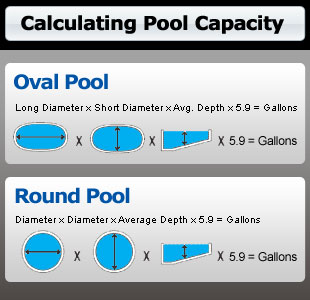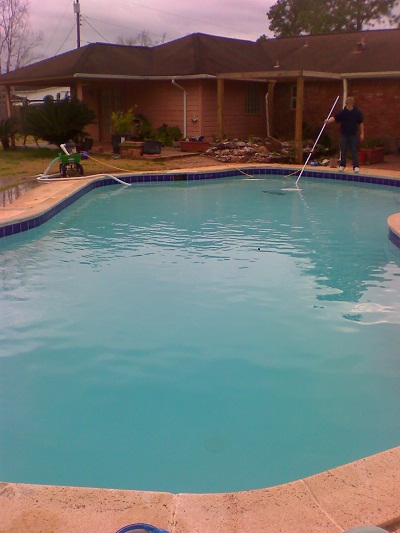Having a pool in your backyard can provide endless hours of fun and relaxation during the summer months. However, one key piece of information that every pool owner should know is the volume of their pool in gallons. Understanding the number of gallons in your pool is essential for maintaining proper chemical balance, determining the correct dosage of pool chemicals, and planning for any necessary repairs or upgrades. In this article, we will guide you on how to calculate the gallons in your pool accurately.
The Importance of Knowing the Gallons in Your Pool
Before we dive into the details of calculating pool gallons, let’s discuss why it is crucial to know this information. When it comes to pool maintenance, maintaining the correct chemical balance is of utmost importance. Whether you are adjusting the pH levels, adding chlorine, or treating algae or other water issues, knowing the volume of your pool is vital to ensure proper chemical dosing. Using the incorrect amount can lead to ineffective treatment or even damage to your pool’s surfaces and equipment.
Additionally, understanding your pool’s gallonage is essential for planning upgrades, like adding a heater or a specific pool cleaner. These purchases require knowledge of your pool’s capacity to ensure that the equipment selected is suitable for your pool’s size.
Calculating the Gallons in Your Pool
To figure out how many gallons are in your pool, you’ll need some basic measurements. Here’s a step-by-step guides of how to calculate gallons in a pond:
- Measure the length, width, and average depth of your pool in feet. If your pool has varying depths, measure from the shallow end to the deep end and calculate the average.
- Multiply the length, width, and average depth together. For example, if your pool measures 20 feet long, 10 feet wide, and has an average depth of 5 feet, the calculation would be 20 x 10 x 5 = 1000 cubic feet.
- Convert cubic feet into gallons by multiplying the cubic footage by 7.48 (since there are 7.48 gallons in a cubic foot). Using our previous example, the calculation would be 1000 x 7.48 = 7480 gallons.
By following these steps, you should be able to calculate the number of gallons in your pool accurately.
Round Pool Calculation Formula
If you have a round pool, the calculation formula is slightly different:
- Measure the diameter (width) of your pool in feet. Divide this number by 2 to calculate the radius (r).
- Measure the average depth of your pool in feet.
- Multiply π (pi) by r squared and then multiply by the average depth. Use the value of π as 3.14. For example, if your pool’s diameter is 28 feet, and the average depth is 6 feet, the calculation would be: (3.14 x 14 x 14) x 6 = 12348.24 cubic feet.
- Convert cubic feet into gallons by multiplying the cubic footage by 7.48. Using our previous example, the calculation would be: 12348.24 x 7.48 = 92253.91 gallons.

Credit: sipoolandspa.com
Using an Online Pool Gallon Calculator
If you find the manual calculations too complex or time-consuming, you can also use online pool gallon calculators. These tools require you to input your pool dimensions, and they will instantly provide you with the volume in gallons. This convenient method takes the hassle out of the calculations and ensures accuracy.

Credit: thepoolscrubbers.com
Frequently Asked Questions
Q: How do I calculate the average depth of my pool?
A: To calculate the average depth, add the shallow end depth and the deep end depth, then divide by two. For example, if the shallow end is 3 feet and the deep end is 9 feet, the average depth is (3 + 9) / 2 = 6 feet.
Q: What is the formula to calculate the volume of a rectangular pool?
A: The formula to calculate the volume of a rectangular pool in gallons is Length (ft) × Width (ft) × Average Depth (ft) × 7.48. This will give you the total number of gallons of water your pool can hold.
Q: How can I calculate the volume of an oval pool?
A: To calculate the volume of an oval pool in gallons, use the formula: Length (ft) × Width (ft) × Average Depth (ft) × 6.7. This formula accounts for the elliptical shape of the pool.
Q: Is there a difference in calculating the volume for an above-ground pool?
A: The formula for calculating the volume of an above-ground pool is the same as for an in-ground pool. The shape and dimensions determine the formula, not the pool type.
Q: How often should I check the water level in my pool?
A: Check the water level in your pool at least once a week. Maintaining the correct water level ensures proper filtration and chemical balance, which are crucial for pool maintenance and safety.
Q: What if my pool has an irregular shape?
A: For irregularly shaped pools, divide the pool into smaller sections, calculate the volume of each section using the appropriate formulas, and then sum the volumes. This method provides a more accurate total volume.
Q: How do I convert cubic feet of water to gallons?
A: To convert cubic feet of water to gallons, multiply the volume in cubic feet by 7.48. One cubic foot of water equals 7.48 gallons. This conversion factor is essential for accurate volume calculations.
Final Words
Knowing the number of gallons in your pool is an essential piece of information for proper pool maintenance, chemical dosing, and planning for any upgrades. By following the calculation methods outlined in this article or utilizing online pool gallon calculators, you can accurately determine the volume of your pool in gallons. So, take the time to calculate your pool’s gallonage and enjoy a well-maintained and enjoyable swimming experience all summer long.





